15 Shocking Facts About Lightning Learn About This Electrifying Phenomenon
lightning Discover 15 fascinating facts about lightning, one of the most awe-inspiring natural phenomena. Learn about its science and unpredictable consequences, like how lightning strikes the earth 8 million times daily or can travel at speeds of up to 220,000 miles per hour. Brace yourself for the sheer power and beauty of this electrifying force of nature!

Lightning is an electrical discharge caused by the build up of electrical charges in the atmosphere.
1 Electric charges can build up between the ground and clouds, or between different clouds, caused by temperature, humidity, and wind speed changes. The build up is released as a lightning bolt when the electrical charge reaches a critical level.
Lightning strikes the earth over 8.6 million times a day.
2 Lightning strikes around 30 million times a year, with electrical charges building up in the atmosphere before discharging as a bolt.
Strikes can occur within or between clouds, or between clouds and the ground. When a bolt hits the ground, it can release up to one billion volts of electricity, posing a serious danger to nearby people and property.
Lightning strikes can reach temperatures up to 30,000 degrees Celsius (54,000 degrees Fahrenheit), generating intense heat.
3 Lightning’s temperature can surpass the sun’s surface temperature of about 5,500 degrees Celsius (9,932 degrees Fahrenheit), creating intense heat. The air surrounding lightning rapidly expands and contracts, creating the sound of thunder that we hear.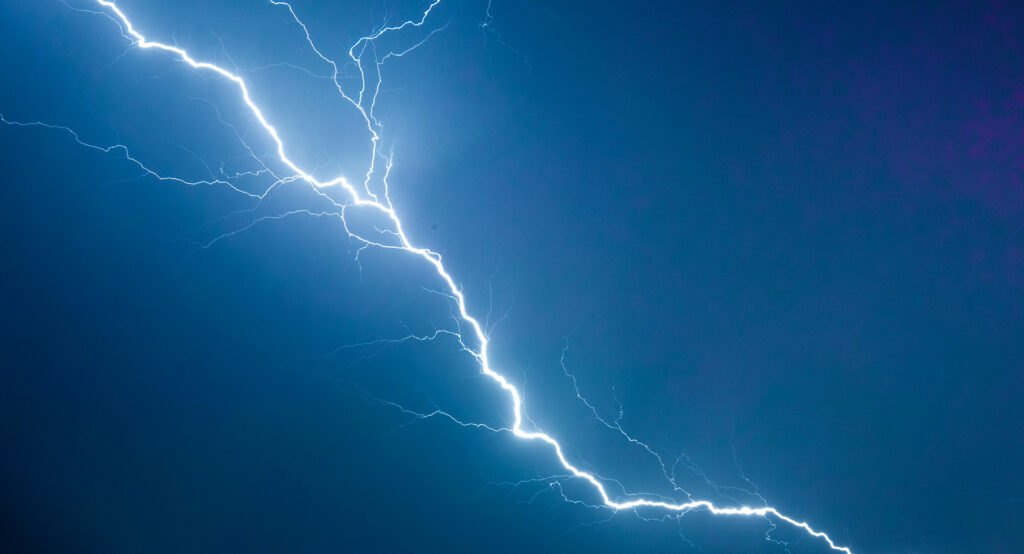
Lightning can travel at speeds of up to 220,000 miles per hour.
4 This is roughly equivalent to one-third of the speed of light. The extreme speed of lightning is due to the sudden release of enormous amounts of energy in the form of an electrical discharge.
Cloud-to-ground Lightning is the most commonly known type of lightning, but there are several others.
5 Including:
Intra-cloud lightning: lightning that occurs within a single cloud.
- Cloud-to-cloud lightning: lightning that occurs between two or more separate clouds.
- Ball lightning: a rare and unexplained form of lightning that appears as a glowing ball.
- Ribbon lightning: a type of cloud-to-ground lightning that appears as a long, horizontal line.
- Bead lightning: a type of cloud-to-ground lightning that appears as a string of bright, glowing beads.
- Staccato lightning: a type of cloud-to-ground lightning that appears as short, sharp bursts.
Thunder is created by lightning, as the bolt heats up the air around it, causing rapid expansion and creating a shockwave that we hear.
6 Thunder travels for miles and the distance between the lightning and the observer can be estimated by counting the seconds between the lightning flash and the sound of thunder.
Lightning can strike the same place multiple times.
7 Especially if it’s a tall, pointed object like a building or a tree that provides a good conductor for the electrical charge to follow. The Empire State Building in New York City, for example, is struck by lightning an average of 23 times per year.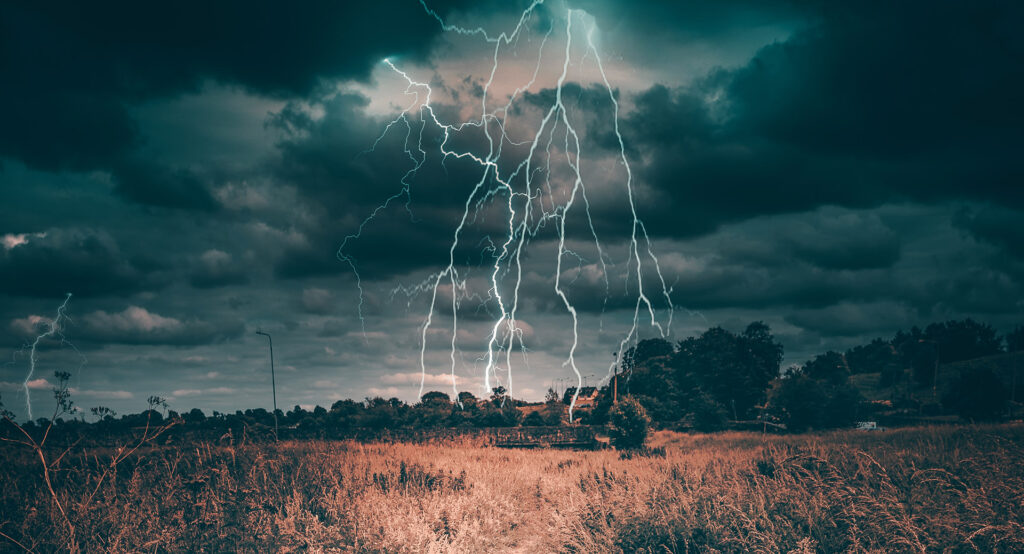
Lightning strikes are responsible for an average of 26 deaths and hundreds of injuries each year in the United States alone.
8 The National Oceanic and Atmospheric Administration (NOAA) reports that in the US alone, lightning strikes cause an average of 26 deaths and hundreds of injuries annually. Worldwide, around 6,000 people are estimated to be killed by lightning strikes each year.
Lightning can cause wildfires, power outages, and damage to buildings and infrastructure.
9 Lightning striking a tree or dry area can cause wildfires, leading to massive destruction. It can also damage power lines, causing outages, and even buildings or other infrastructure, resulting in costly repairs.
Lightning is more likely to strike tall objects because they provide a shorter path for the electrical discharge to travel to the ground.
10 The electric field is stronger around a pointed object, making it easier for lightning to jump the gap between the object and the ground than with a flat surface.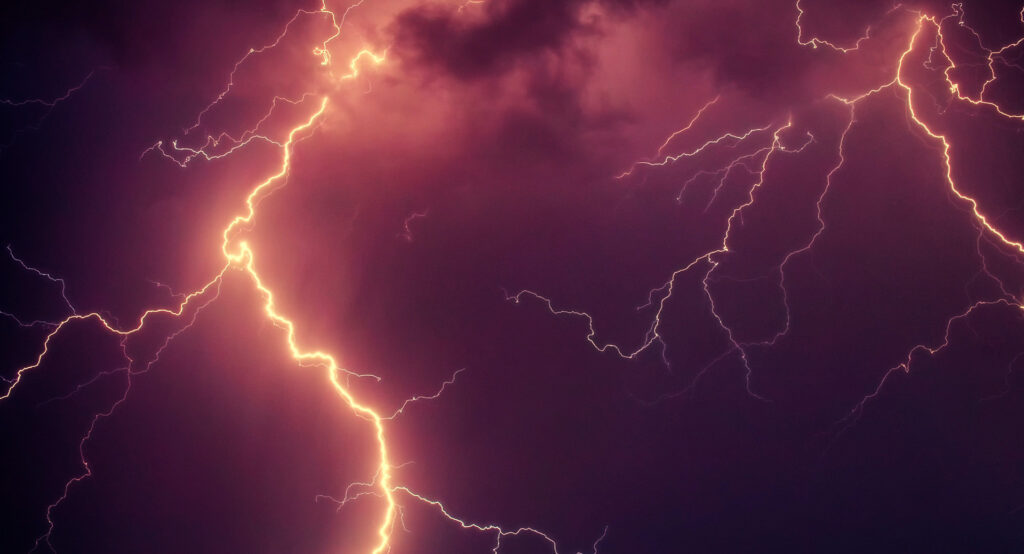
Benjamin Franklin conducted the famous kite experiment in 1752 to demonstrate that lightning was a form of electricity.
11 Attaching a metal key to a kite string, the experimenter observed an electric spark when he brought the key close to a metal rod, a crucial step in understanding electricity and lightning.
Lightning can produce a variety of unusual phenomena, such as ball lightning and sprite lightning.
12 Ball lightning is rare, lasts several seconds, and may be linked to lightning and Earth’s magnetic field. Sprite lightning, a red, jellyfish-like structure, occurs above thunderstorm clouds due to lightning interacting with the upper atmosphere.
Ongoing research seeks to understand these phenomena better.
Lightning has been observed on many planets in our solar system, including Venus, Jupiter, Saturn, Uranus, and Neptune.
13 However, the lightning on these planets is different from the lightning on Earth, as the atmospheric conditions and composition are different. For example, lightning on Jupiter is thought to be caused by a combination of sulphur and ammonia in the planet’s atmosphere.
Lightning strikes can cause a range of serious injuries
14 Though rare, lightning strikes can cause injuries such as burns, hearing loss, nerve damage, and cognitive impairments, and even cardiac arrest.
To prevent such injuries, take lightning safety precautions and seek immediate medical attention in case of a strike.
There have been reports of exceptionally long Lightning bolts, with some stretching for over 300 miles.
15 These are known as “mega flashes” and were first observed by satellites in 2019. Mega flashes can travel horizontally across the sky for hundreds of miles, and can also occur within a thunderstorm cloud, with some stretching from the cloud top to the ground.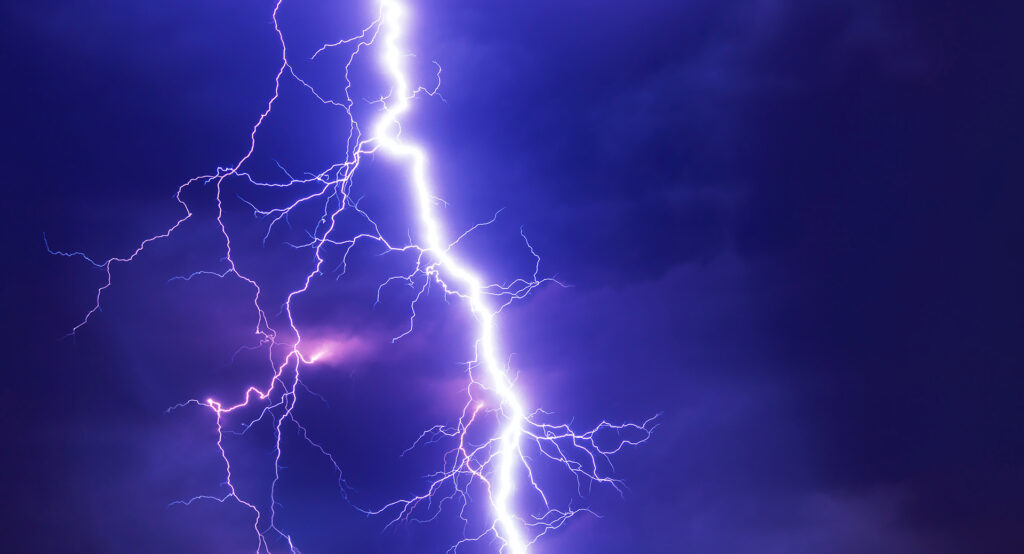

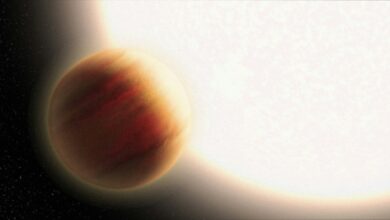


Greetings! Very helpful advice on this article! It is the little changes that make the biggest changes. Thanks a lot for sharing!